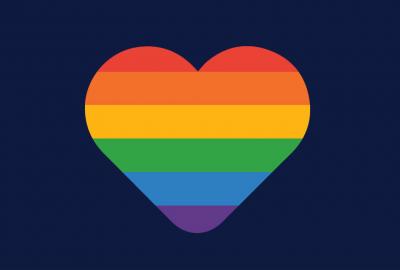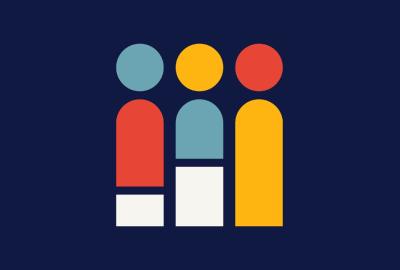The acronym 2SLGBTQI+ encompasses a wide range of sexual orientations and gender identities beyond heteronormativity and the gender binary. It stands for Two-Spirit, lesbian, gay, bisexual, transgender, queer, intersex, asexual, and the "+" symbolizes the inclusion of numerous other identities that fall under the 2SLGBTQI+ umbrella.
Despite the diversity of the 2SLGBTQI+ community, discrimination persists in hiring practices, even though this is prohibited by law.
It's important to note that biases in hiring practices are not necessarily rooted in overt homophobia.
Many biases operate on a subconscious level, and the majority of people do not intentionally discriminate against 2SLGBTQI+ individuals.
Mistakes often stem from a lack of knowledge and understanding. Therefore, it is crucial to educate oneself and actively put in the effort to foster respect and inclusion.
To create a safe and inclusive workplace, it is essential to address common barriers faced by 2SLGBTQI+ individuals. Here are some ways your company can contribute to this:
avoid making heteronormative and cisnormative assumptions
Heteronormativity refers to the belief that heterosexuality is the default and expected sexual orientation in our society.
This belief system can be detrimental to 2SLGBTQI+ individuals as it establishes a hierarchy among sexual orientations and reinforces heterosexism and homophobia.
Similarly, cisnormativity assumes that everyone is cisgender and disregards the existence of transgender individuals.

53% of people feel the need to conceal their identity in the workplace. This statistic speaks volumes about the challenges faced by 2SLGBTQI+ individuals.
One of the primary barriers for 2SLGBTQI+ individuals in the workforce is the pervasive heteronormative assumption that everyone:
- is heterosexual
- fits into the binary gender categories of male or female.
Such heteronormative and cisnormative assumptions can be particularly harmful to non-binary and transgender individuals. However, there are specific steps you can take to avoid imposing these assumptions on others.
For instance, when discussing relationships in the workplace, consider using inclusive language. Instead of assuming everyone has a husband or wife, use terms like partners or spouses. This approach recognizes diverse relationship structures and avoids presuming everyone's sexual orientation.
stop using gendered language
Gendered language is pervasive in the workplace, starting from the early stages of the job cycle, such as job interviews. It is common for interviewers to address candidates as Mr/Sir or Ms/Madam/Miss based on their perception of the candidate's gender.
However, using inclusive language that does not assume gender is a more respectful and inclusive approach. Simply using the candidate's name during the interview process can help avoid making assumptions.
Another area where gendered language often arises is in HR forms and written content. It is crucial to expand the gender options beyond just man and woman, including non-binary and other gender identities.
Additionally, offering more inclusive titles and pronouns, as well as a fill-in-the-blank option for those who identify in a different way, can help create a more inclusive environment.
Referring to someone automatically as Mr/Ms without considering their gender identity disregards the experiences of transgender and non-binary individuals. It is essential to respect individuals' chosen names and pronouns, especially if they have transitioned during their time at your company. Using a person's deadname, which is their birth name before their gender transition, can be disrespectful and invalidating.
To foster inclusivity, provide employees with the opportunity to state their gender pronouns and naming preferences voluntarily. However, it is important to ensure that this information is not mandatory, as some individuals may not feel comfortable or safe disclosing this information.
While it may be well-intentioned to ask employees or candidates to self-identify, it should never be enforced as a requirement on forms, email signatures, or any other professional context.
Forcing someone to publicly share their identity can cause harm and force individuals to disclose information they are not ready to share.
By embracing inclusive language and respecting individuals' gender identities and preferences, you create a workplace that values diversity and fosters a sense of belonging for all employees.
check out our inclusive language guide
Language matters. Learn why it matters and how to use inclusive language in your professional and personal life with our language guide.
get your copymake sure your benefits are inclusive
Ensuring inclusivity extends beyond policies against discrimination and harassment in the workplace. It's essential to assess whether your company's benefits packages and perks are truly inclusive.
While your zero-tolerance policies may be clearly stated in your terms and conditions, it's equally important to examine how these policies translate into your benefits offerings and whether they address the needs and realities of 2SLGBTQI+ individuals.
Consider whether your company's health insurance provides spousal coverage for same-sex partners. Does it include coverage for transition-related expenses?
Reflect on how you can create benefits and perks that are truly inclusive, embracing and acknowledging the experiences and identities of 2SLGBTQI+ individuals.
By prioritizing inclusive benefits, you demonstrate your commitment to equality and create an environment that supports the well-being and needs of all employees, regardless of their sexual orientation or gender identity.
Remember, inclusivity is a continuous journey, and regularly reviewing and improving your benefits packages is an important step in creating a truly inclusive workplace.
make an effort going forward
We all make mistakes; they are an inherent part of the learning process. When you do make a mistake, it's important to apologize and take responsibility for it without trying to defend yourself.
By doing so, you contribute to an environment where your company can sincerely learn and grow, taking responsibility for offering the best to all employees.
Think of it like mispronouncing a colleague's name. When corrected, you make an effort to say it correctly from then on. Similarly, as a leader, setting an example is crucial in creating an inclusive working environment.
It's essential to be mindful of how your messages might be interpreted and the words you choose. Taking a step back and asking yourself if your message is inclusive is a valuable practice.
Remember, you don't have to navigate this alone. Forming support groups and networks within your company can provide valuable resources, enabling your organization to better understand the positive changes needed in policies and fostering a more inclusive culture overall.
Together, we can make a difference.
work with us
Ready to partner with a recruitment agency that values diversity and inclusion in every step of the hiring process? We are dedicated to creating a fair and equal opportunity for all talent, ensuring that gender or sexual orientation does not hinder the search for the best candidates.
Reach out to us today to discover how our commitment to inclusivity can benefit your organization. Contact us now to learn more and let us help you find exceptional candidates.






